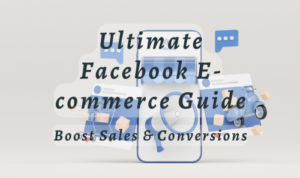Building a Marketing Funnel dives deep into the world of turning leads into loyal customers, showcasing the ultimate strategies to boost your business game. Get ready to learn the ins and outs of creating a killer marketing funnel that drives results like never before.
Overview of Marketing Funnel
A marketing funnel is a strategic framework used by businesses to guide potential customers through a series of stages, ultimately leading them to make a purchase. The purpose of a marketing funnel is to nurture leads and convert them into paying customers through targeted marketing efforts.
Stages of a Typical Marketing Funnel
A typical marketing funnel consists of several stages, each designed to move prospects further down the path to conversion:
- Awareness: This is the stage where potential customers become aware of a product or service through marketing channels such as social media, search engines, or advertising.
- Interest: Once aware, leads develop an interest in the product or service and seek more information to evaluate its benefits and features.
- Consideration: At this stage, prospects are considering whether the product or service meets their needs and compares it with other options in the market.
- Intent: Prospects show intent to make a purchase and are ready to take action, such as adding items to a cart or filling out a contact form.
- Decision: The final stage where leads make a decision to purchase the product or service, becoming a customer.
Examples of Using Marketing Funnels
Businesses across various industries utilize marketing funnels to convert leads into customers effectively. Here are some examples:
- Online retailers use marketing funnels to guide visitors from product discovery to checkout, offering personalized recommendations and incentives along the way.
- Service-based businesses use marketing funnels to capture leads through consultations or free trials, nurturing them with educational content before converting them into paying clients.
- Software companies implement marketing funnels to onboard users from sign-up to subscription, providing tutorials and customer support to increase retention rates.
Building Awareness

Creating brand awareness at the top of the marketing funnel is crucial for capturing the attention of potential customers and introducing them to your products or services. This stage is all about making your brand known to a wider audience and establishing a strong presence in the market.
Strategies for Building Awareness
- Utilize social media platforms to engage with your target audience and share valuable content that showcases your brand’s personality.
- Collaborate with influencers or industry experts who can help amplify your message and reach a larger audience.
- Invest in search engine optimization () to improve your website’s visibility and attract organic traffic.
Importance of Targeted Advertising
Targeted advertising allows you to reach a specific audience based on demographics, interests, and online behavior, ensuring that your message reaches the right people at the right time. By targeting your ads effectively, you can maximize your marketing efforts and increase the chances of converting leads into customers.
Examples of Successful Awareness-Building Campaigns
One great example is Nike’s “Just Do It” campaign, which not only increased brand visibility but also resonated with consumers on a personal and emotional level.
Another successful campaign is Coca-Cola’s “Share a Coke” initiative, where personalized bottles sparked social media buzz and generated widespread awareness for the brand.
Generating Interest
To move potential customers from the awareness stage to the consideration stage, it is crucial to capture their interest and keep them engaged. This involves creating compelling content that resonates with their needs and desires, as well as interacting with them in meaningful ways.
Capturing Interest
In the consideration stage, potential customers are actively seeking solutions to their problems or needs. To capture their interest, it is essential to provide valuable and relevant information that addresses their pain points. This can be done through content such as informative blog posts, engaging social media posts, or helpful videos that showcase your product or service in action.
- Utilize personalized email campaigns to send targeted content based on the interests and behaviors of leads.
- Host webinars or virtual events to provide in-depth information and interact with potential customers in real-time.
- Create interactive quizzes or assessments that engage leads and provide personalized recommendations based on their responses.
Engaging and Nurturing Leads
Once you have captured the interest of potential customers, it is important to engage with them consistently and nurture their interest over time. This involves building relationships, providing value, and guiding leads through the decision-making process.
- Use marketing automation tools to send personalized follow-up emails and targeted content to leads at key stages of the buyer’s journey.
- Offer free trials, demos, or consultations to give leads a hands-on experience with your product or service.
- Create a loyalty program or exclusive offers to reward repeat customers and keep them engaged with your brand.
Creating Compelling Content
To maintain the interest of potential customers, it is crucial to consistently create compelling content that educates, entertains, and inspires. This content should be tailored to the needs and preferences of your target audience, providing value and building trust.
- Develop a content calendar to plan and organize your content strategy, ensuring a mix of formats and topics to keep leads engaged.
- Utilize storytelling techniques to create emotional connections with your audience and make your brand more relatable.
- Monitor the performance of your content through analytics and feedback to continually optimize and improve your strategy.
Driving Action: Building A Marketing Funnel

To drive action and move leads towards a purchase, businesses can implement various strategies aimed at encouraging potential customers to take the next step. One key aspect of this process is the use of persuasive call-to-actions to prompt conversions and ultimately convert leads into customers.
Strategies for Encouraging Action, Building a Marketing Funnel
- Offer limited-time promotions or discounts to create a sense of urgency.
- Provide clear and concise instructions on how to proceed with the purchase.
- Utilize social proof, such as customer testimonials or reviews, to build trust and credibility.
- Implement retargeting ads to remind leads of products they have shown interest in.
Role of Persuasive Call-to-Actions
A persuasive call-to-action serves as a direct instruction to the consumer on what action to take next. By using compelling language and emphasizing the benefits of proceeding with the purchase, businesses can increase the likelihood of conversions.
Effective Tactics for Converting Leads
- Creating a sense of exclusivity with limited edition products or services.
- Providing a money-back guarantee to alleviate any potential concerns or doubts.
- Implementing a seamless checkout process to reduce friction and increase the chances of completing the purchase.
- Utilizing personalized recommendations based on the lead’s previous interactions with the brand.





